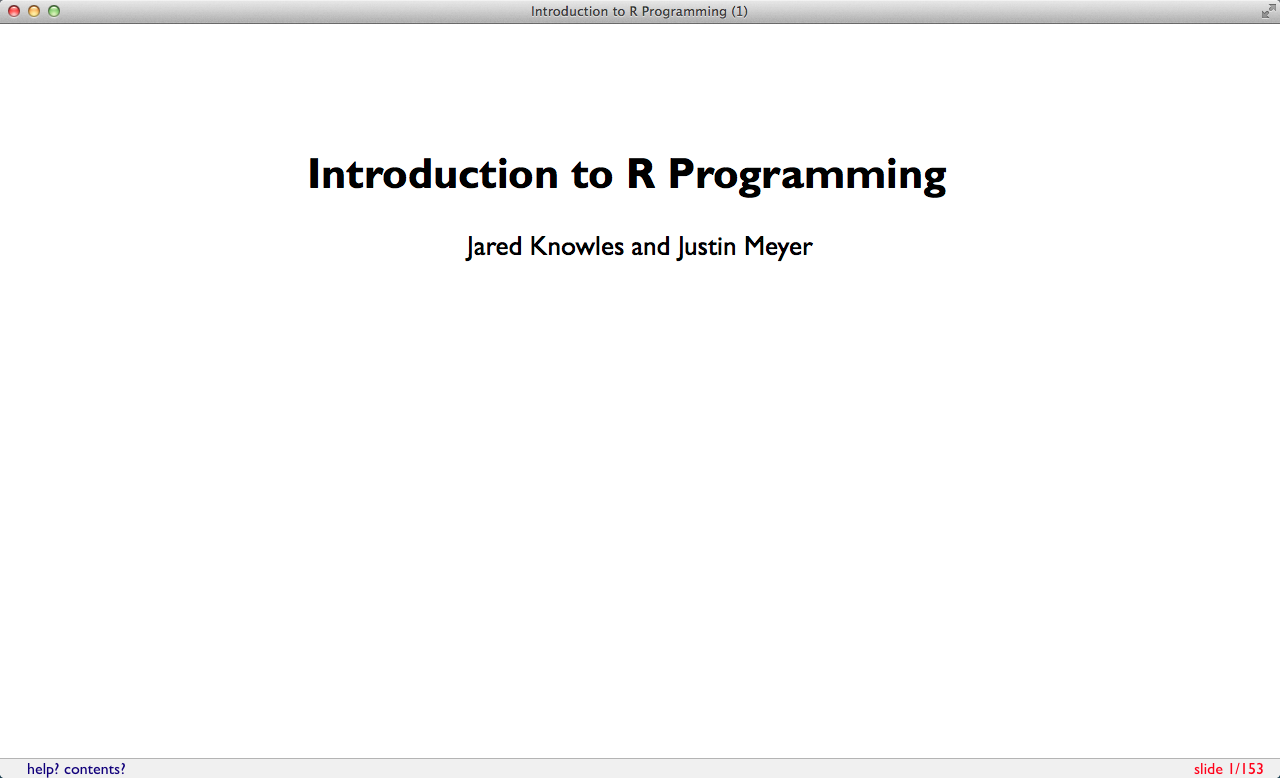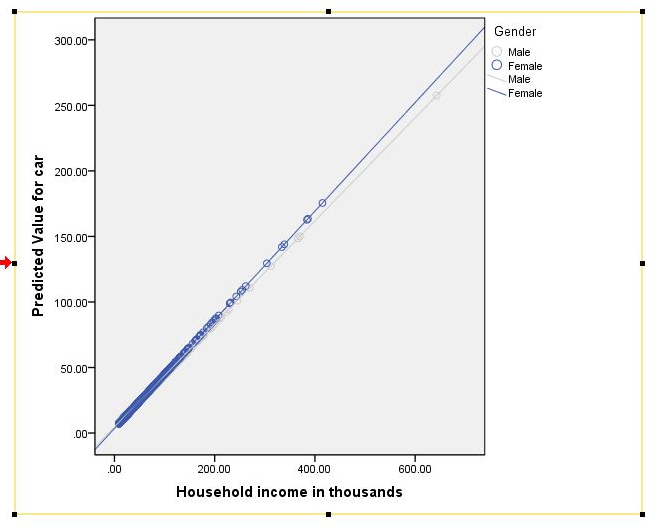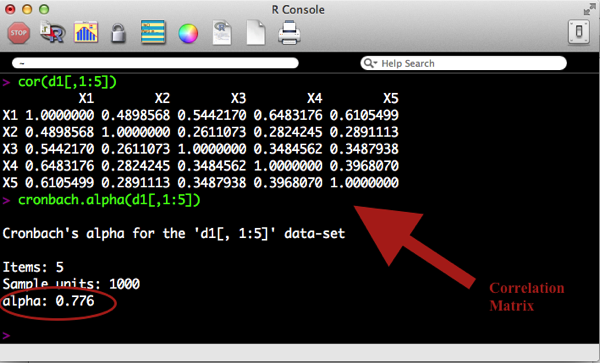The distinctions between ANOVA, ANCOVA, MANOVA, and MANCOVA can be difficult to keep straight. Before one can appreciate the differences, it is helpful to review the similarities among them. The core component of all four of these analyses (ANOVA, ANCOVA, MANOVA, AND MANCOVA) is the first in the list, the ANOVA.
Read MoreWithin-person (or within-subject) effects represent the variability of a particular value for individuals in a sample. You see this commonly examined in repeated measures analysis (such as repeated measures ANOVA, repeated measures ANCOVA, repeated measures MANOVA or MANCOVA…etc). In these instances, a within person effect is a measure of how much an individual in your sample tends to change (or vary) over time. In other words, it is the mean of the change for the average individual case in your sample.
Read MoreFormatting a graph that was exported from SPSS to Microsoft Word can be an absolute pain. Since neither program is known for it's simplicity or "user-friendliness", the interaction between the two can be predictably tedious and frustrating. The process of converting a standard SPSS table to APA format might be bearable, when you are talking about a single table, but can become overwhelming when you have an entire manuscript worth of tables. Fortunately, a few minor alterations to your SPSS settings can make SPSS do most of the heavily lifting for you, making SPSS automatically produce tables that closely resemble APA format and cutting down your formatting time by as much as 90%!
Read MoreThe following is one of the best introductions to R programming that I've found online. It is part of a larger series of tutorials created by Jared Knowles called R Bootcamp. Jared's tutorials are a valuable resource for anyone try to learn to program in R. Below the presentation are links to the handouts and R Code that are used during the HTML5 presentation that is linked below. Enjoy!
Read MoreSo you've run your general linear model (GLM) or regression and you've discovered that you have interaction effects. Now what? Next, you might want to plot them to explore the nature of the effects and to prepare them for presentation or publication! The following is a tutorial for who to accomplish this task in SPSS. A follow-up tutorial for how to do this in R is forth coming.
Read MoreInternal consistency refers to the general agreement between multiple items (often likert scale items) that make-up a composite score of a survey measurement of a given construct. This agreement is generally measured by the correlation between items.
For example, a survey measure of depression may include many questions that each measure various aspects of depression, such as:
Read MorePart 3 we used the lm() command to perform least squares regressions. In Part 4 we will look at more advanced aspects of regression models and see what R has to offer. One way of checking for non-linearity in your data is to fit a polynomial model and check whether the polynomial model fits the data better than a linear model. Or you may wish to fit a quadratic or higher model because you have reason to believe that the relationship between the variables is inherently polynomial in nature.
Let’s see how to fit a quadratic model in R...
Read MoreHeteroscedasticity is a hard word to pronounce, but it doesn't need to be a difficult concept to understand. Put simply, heteroscedasticity (also spelled heteroskedasticity) refers to the circumstance in which the variability of a variable is unequal across the range of values of a second variable that predicts it.
A scatterplot of these variables will often create a cone-like shape, as the scatter (or variability) of the dependent variable (DV) widens or narrows as the value of the independent variable (IV) increases. The inverse of heteroscedasticity is homoscedasticity...
Read MoreIn the strictest sense, APA style discourages the use of color in graphics, stipulating that it be used only when it is "absolutely necessary". Consequently, most universities and dissertation committees also discourage (or downright forbid) the use of color graphics in dissertation manuscripts. Personally, i find this irritating, as I think most graphical representations of data can be made more clear with the appropriate use of color. However, I suppose the guideline is meant to provide uniformity and consistency across manuscripts, which is understandable.
Unfortunately, if you use SPSS you've probably already discovered that it produces graphics in color by default. Not to worry, your graphs can be changed easily. Better yet, you can make simple adjustments to your SPSS settings that will force the program to create APA-compliant (i.e. black & white) graphics in all output! Here is how you do it...
Read MoreStructural equation modeling (SEM) is a complex beast, and can be quite intimidating to someone trying to learn the basics. Fortunately, there are some great resources out there for learning! Unfortunately, I think a lot of beginners don't know what those great resources are, or where to find them.
Read MoreIt is quite common in political science for researchers to run statistical models, find that a coefficient for a variable is not statistically significant, and then claim that the variable "has no effect." This is equivalent to proposing a research hypothesis, failing to reject the null, and then claiming that the null hypothesis is true (or discussing results as though the null hypothesis is true). This is a terrible idea. Even if you believe the null, you shouldn't use p > 0.05 as evidence for your claim. In this post, I illustrate why...
Read MoreIn today's blog entry, I will walk through the basics of conducting a repeated-measures MANCOVA in SPSS. I will focus on the most basic steps of conducting this analysis (I will not address some complex side issues, such as assumptions, power…etc). If you find yourself with lingering questions after walking through this blog, feel free to leave questions in the "comments" section, or visit the MANCOVA section of my discussion forum to find answers and/or ask questions of your own. Full disclosure: the example data used is from the SPSS sample/help files, and it can be downloaded below...
Read MoreI have a saying that I like to tell consulting clients, which is easier said than done, but I think are words for doctoral candidates to live by: "The only bad dissertation draft is one that isn't turned-in." The most common factor that unnecessarily slows progress on a dissertation proposal or defense is a propensity to strive for the perfect draft. As a graduate student, we all fantasized of turning-in our first draft and having our advisor, being so amazed at its brilliance, insist that you accept your PhD on the spot...
Read MoreI received a great question this week, which asked: In order for a moderating relationship to exist, do the predictor IV and dependent variable need to be significantly correlated?". This is a question that I am asked a lot, partly because of the common confusion between mediators and moderators and the commonly held belief that an IV and DV should be related for mediation to be present (see my video blog on Mediators, Moderators, and Suppressors for more info on this topic). However, moderators are a completely different story...
Read MorePreparing a dataset for analysis is an arduous process. Besides recoding and cleaning variables, a diligent data analyst also must assign variable labels and value labels, unless they choose to wait until after your output is exported to Microsoft Word. Unfortunately, that option only leaves additional opportunity for error and confusion, not to mention the inefficiency of editing tables in Microsoft Word...
Read MoreWhen I hear the word "residual", the pulp left over after I drink my orange juice pops into my brain, or perhaps the film left on the car after a heavy rain. However, when my regression model spits out an estimate of my model's residual, I'm fairly confident it isn't referring to OJ or automobile gunk...right? Not so fast, that imagery is more similar to it's statistical meaning than you might initially think.
Read MoreMulticollinearity said in "plain English" is redundancy. Unfortunately, it isn't quite that simple, but it's a good place to start. Put simply, multicollinearity is when two or more predictors in a regression are highly related to one another, such that they do not provide unique and/or independent information to the regression.
Read MoreWhile there is no "magic bullet" to make stats and data analysis easy to understand and helpful in our research, there are some things that you can do to avoid pitfalls and help things run smoothly. This "top ten" list offers a few of those things that I think you will find helpful! I'll be posting a video of this list later today on my Stats Videos page.
Read MoreThe Bonferroni correction is only one way to guard against the bias of repeated testing effects, but it is probably the most common method and it is definitely the most fun to say. I've come to consider it as critical to the accuracy of my analyses as selecting the correct type of analysis or entering the data accurately. Unfortunately adjustments for repeated testing of hypotheses, as a whole, remains something that is often overlooked by researchers and the consequences may very well be inaccurate results and misleading inferences. In this independence day blog, I'll discuss why the Bonferroni Correction should be as important as apple pie on the 4th of July.
Read More













